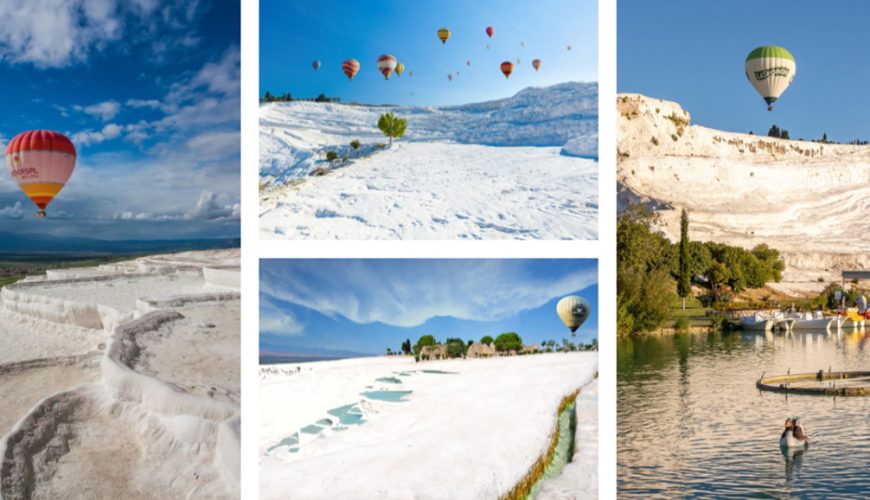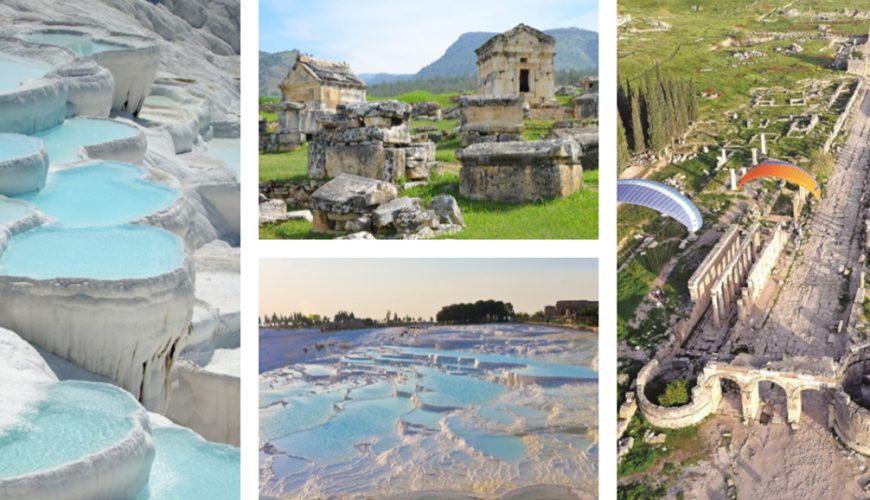Category: Questions about Pamukkale
- Home
- Category: Questions about Pamukkale
The famous white travertine thermal pools, which have been the main tourist attraction in this region since the second century BC, are located at Pamukkale. While the summer months of June through August are considered to be peak season, it is the finest time to go to Pamukkale. While it is a popular period to […]
Read More
The famous white travertine thermal pools, which have been the main tourist attraction in this region since the second century BC, are located at Pamukkale. While the summer months of June through August are considered to be peak season, it is the finest time to go to Pamukkale. While it is a popular period to […]
Read More
The famous white travertine thermal pools, which have been the main tourist attraction in this region since the second century BC, are located at Pamukkale. While the summer months of June through August are considered to be peak season, it is the finest time to go to Pamukkale. While it is a popular period to […]
Read More
Istanbul is about 580 km far from Pamukkale and there are several ways to get there: Travel from Istanbul to Pamukkale by bus Despite the long journey, the intercity bus service between Istanbul and Denizli (the entrance to Pamukkale) is very popular, and there are many bus options. There are buses departing every hour from […]
Read More
Istanbul is about 580 km far from Pamukkale and there are several ways to get there: Travel from Istanbul to Pamukkale by bus Despite the long journey, the intercity bus service between Istanbul and Denizli (the entrance to Pamukkale) is very popular, and there are many bus options. There are buses departing every hour from […]
Read More
Istanbul is about 580 km far from Pamukkale and there are several ways to get there: Travel from Istanbul to Pamukkale by bus Despite the long journey, the intercity bus service between Istanbul and Denizli (the entrance to Pamukkale) is very popular, and there are many bus options. There are buses departing every hour from […]
Read More
The significance of Pamukkale derives from its uniqueness in the context of earth’s natural wonders, such as warm, mineralized water that flows from springs and forms pools and terraces. Hierapolis was founded here, which is a wonderful example of a Graeco-Roman thermal installation. The Christian monuments at this location are excellent examples for early-Christian architecture […]
Read More
The significance of Pamukkale derives from its uniqueness in the context of earth’s natural wonders, such as warm, mineralized water that flows from springs and forms pools and terraces. Hierapolis was founded here, which is a wonderful example of a Graeco-Roman thermal installation. The Christian monuments at this location are excellent examples for early-Christian architecture […]
Read More
The significance of Pamukkale derives from its uniqueness in the context of earth’s natural wonders, such as warm, mineralized water that flows from springs and forms pools and terraces. Hierapolis was founded here, which is a wonderful example of a Graeco-Roman thermal installation. The Christian monuments at this location are excellent examples for early-Christian architecture […]
Read More
The ancient city of Hierapolis, located in modern-day Pamukkale, southwestern Turkey, is approximately 6 miles (10 km) north of the ruins of Laodicea. It is about 580km far from Istanbul and there are direct flights everyday from Istanbul to Denizli Airport. Situated on the Coruh River, a tributary of the Buyuk Menderes (Maeander) River, it […]
Read More
The ancient city of Hierapolis, located in modern-day Pamukkale, southwestern Turkey, is approximately 6 miles (10 km) north of the ruins of Laodicea. It is about 580km far from Istanbul and there are direct flights everyday from Istanbul to Denizli Airport. Situated on the Coruh River, a tributary of the Buyuk Menderes (Maeander) River, it […]
Read More
The ancient city of Hierapolis, located in modern-day Pamukkale, southwestern Turkey, is approximately 6 miles (10 km) north of the ruins of Laodicea. It is about 580km far from Istanbul and there are direct flights everyday from Istanbul to Denizli Airport. Situated on the Coruh River, a tributary of the Buyuk Menderes (Maeander) River, it […]
Read More
The ancient city of Hierapolis, located in modern-day Pamukkale, southwestern Turkey, is approximately 6 miles (10 km) north of the ruins of Laodicea. It is about 580km far from Istanbul and there are direct flights everyday from Istanbul to Denizli Airport. Situated on the Coruh River, a tributary of the Buyuk Menderes (Maeander) River, it […]
Read More
The ancient city of Hierapolis, located in modern-day Pamukkale, southwestern Turkey, is approximately 6 miles (10 km) north of the ruins of Laodicea. It is about 580km far from Istanbul and there are direct flights everyday from Istanbul to Denizli Airport. Situated on the Coruh River, a tributary of the Buyuk Menderes (Maeander) River, it […]
Read More



